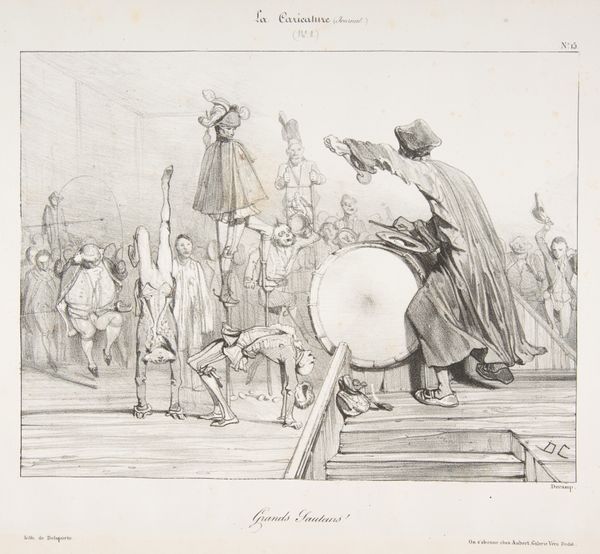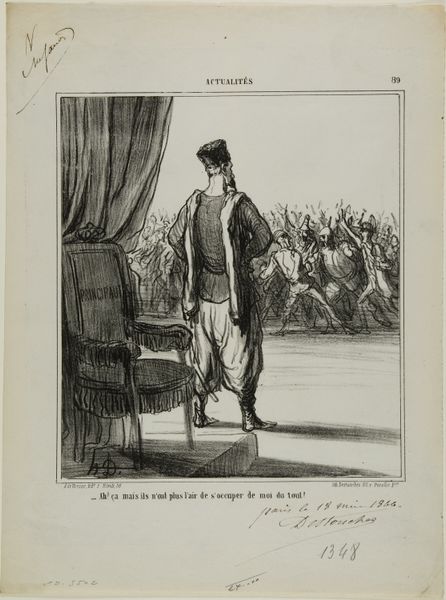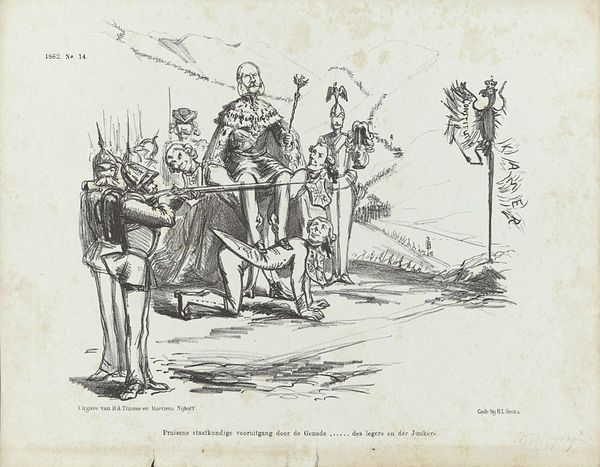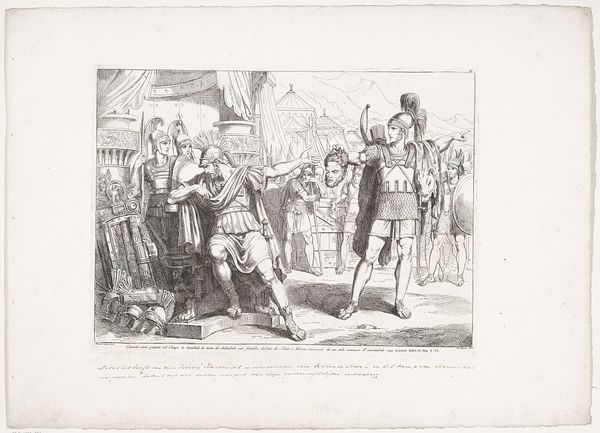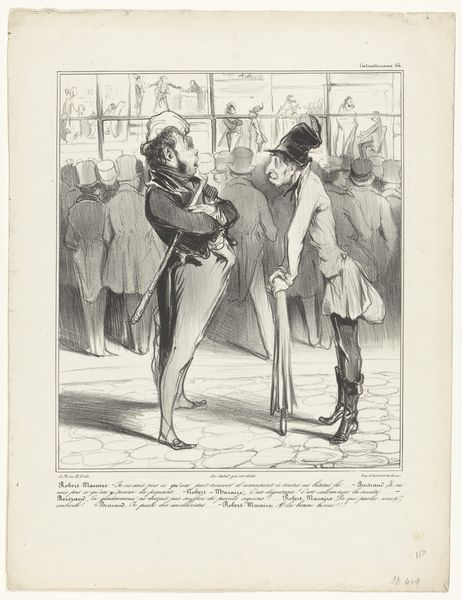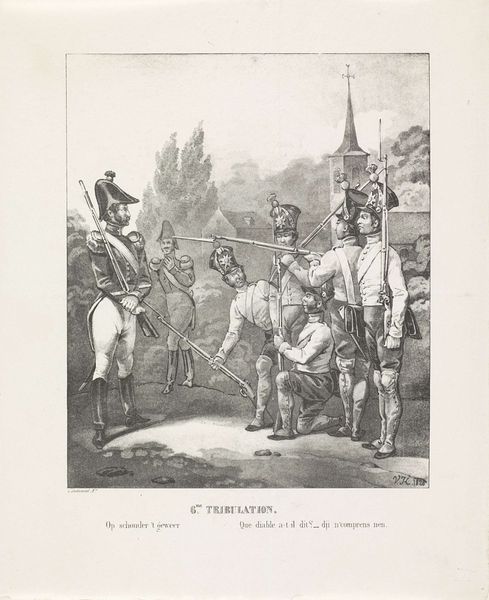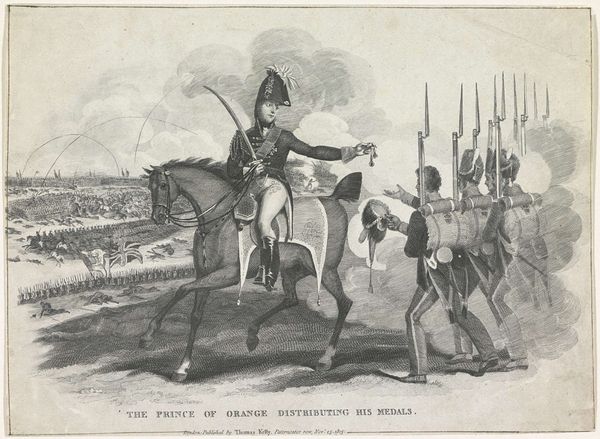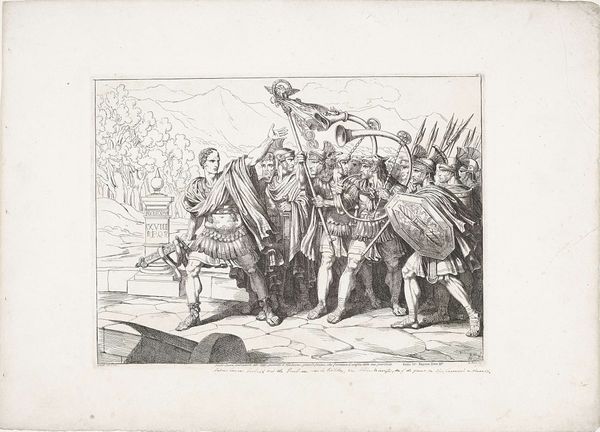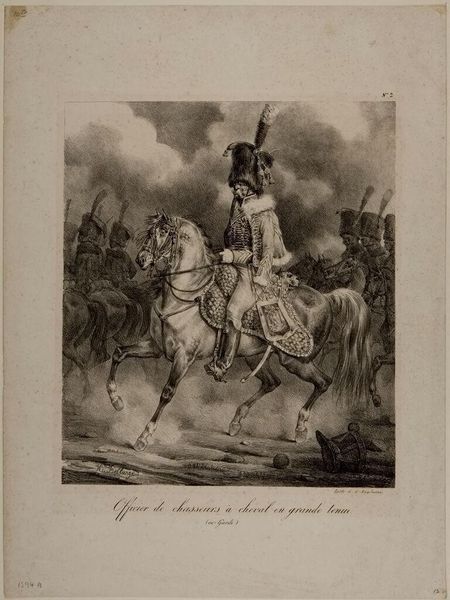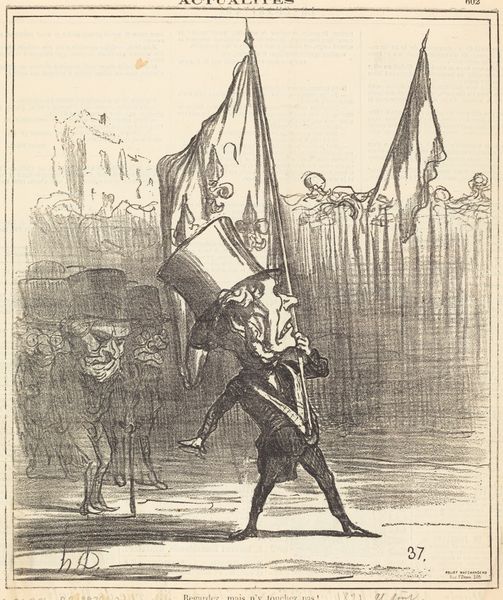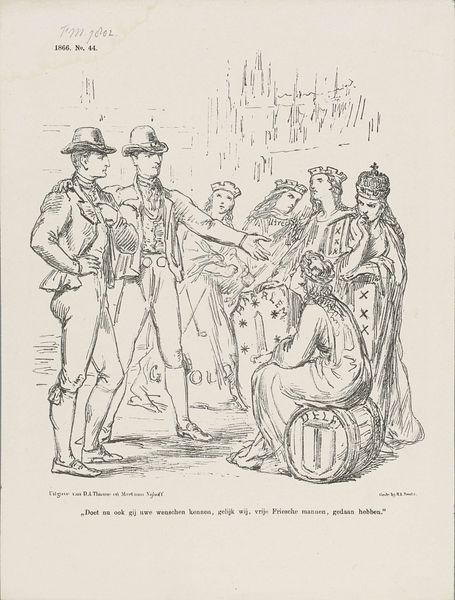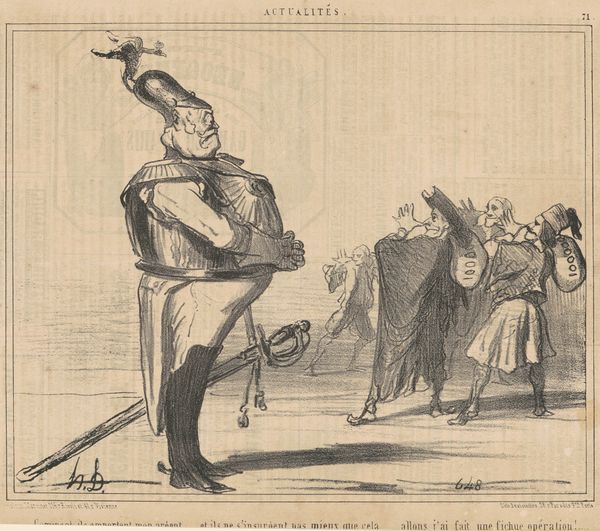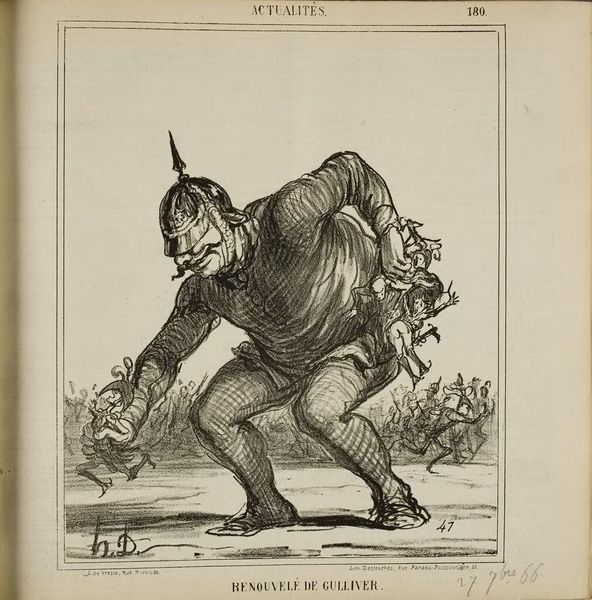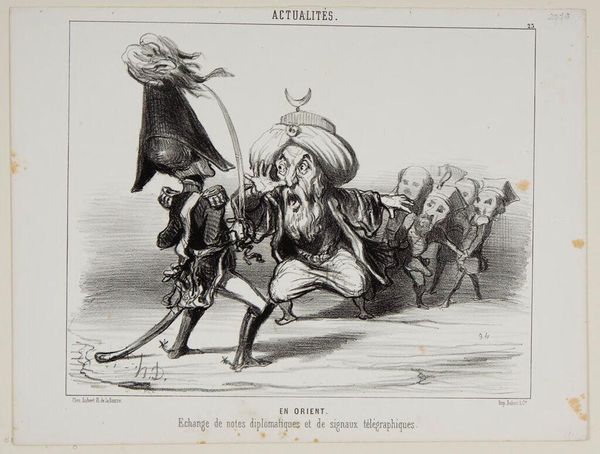
A European Concert. Not allowed to participate in this part, plate 171 from Actualités 1867
0:00
0:00
Dimensions: 244 × 207 mm (image); 361 × 278 mm (sheet)
Copyright: Public Domain
Editor: So, this is "A European Concert. Not allowed to participate in this part" by Honoré Daumier, a lithograph from 1867. The figure sitting on the cannon seems…isolated, even dejected, despite the lively crowd in the background. How do you interpret this work? Curator: This print, made during a turbulent period in European history, offers a sharp critique of power dynamics. The figure perched on the cannon, clearly excluded from the "concert," represents those marginalized by the political machinations of the time. Think about who wasn't invited to the table as Europe redrew its borders. Who benefited, and at whose expense? Editor: So, the “European Concert” isn’t a literal musical event but a metaphor for political negotiations? The isolation of the figure is symbolic? Curator: Precisely. Daumier frequently used satire to comment on social injustices. The “concert” refers to the European powers deciding the fate of nations, often disregarding the voices and needs of smaller or less powerful entities. Consider the rise of nationalism and imperialism in this era; Daumier challenges us to examine who is silenced in the pursuit of progress. Who pays the price? Editor: That makes the title's irony so much clearer! It’s a "concert" from which many are excluded, a performance for the powerful only. Curator: Exactly. Daumier is urging us to consider the marginalized voices in these historical narratives. To connect the personal and the political by highlighting injustice in social and political structures. Editor: It's fascinating how art can be a form of protest. It’s so powerful. Thanks, that really clarified things! Curator: Indeed. It reveals uncomfortable truths and urges action. The questions Daumier raises still resonate today, reminding us of the importance of inclusive dialogue and the fight against exclusion in all its forms.
Comments
No comments
Be the first to comment and join the conversation on the ultimate creative platform.
